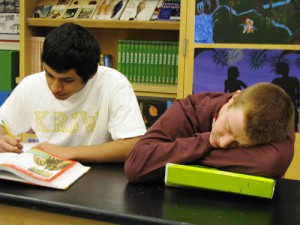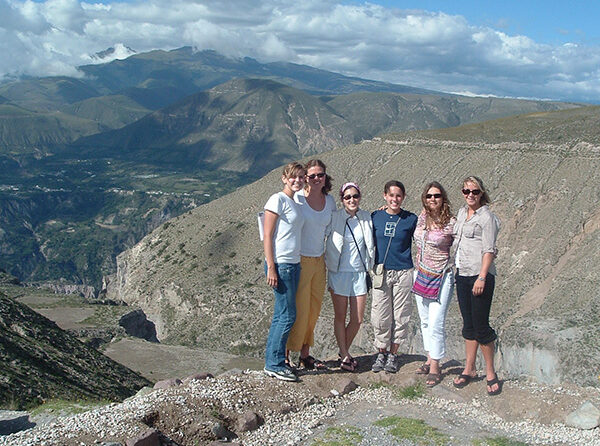By Vince Teresi
Americans are in an epidemic of sleep deprivation, according to recent medical studies – and teenagers are certainly included.
Professional studies during the past 20 years support the belief that teenagers require more than nine hours of sleep each night, and that they have different sleep and wake patterns from preadolescents and adults.
“Adequate sleep is so fundamental, but often overlooked in teenagers,” Mt. Angel Middle School counselor Kevin Ortega said. “With infants and toddlers, we are adept at identifying when our children need more sleep, but somehow when they become teens, we fail to see it.”
Northwestern University research indicates the nation’s teenagers need more sleep than they are getting. They often try to satisfy that need by sleeping in until noon or later on the weekend.
Consequences of insufficient sleep for youths are disheartening. The National Sleep Foundation points out some signs of sleep deprivation: difficulty arising in the morning; irritability in the afternoon; falling asleep during the day at school; having difficulty remembering or concentrating; waking up often and having trouble getting back to sleep.
Sleep deprivation can cause extreme moodiness, poor performance in school and aggression. Statistics also reveal that teenagers are at high risk of having car accidents because of falling asleep behind the wheel.
“When we see irritability, moodiness or apathy in teens, we’re more likely to consider it ‘hormones’ or ‘a phase,’ or even depression,” Ortega said, “when in fact we might be wise to consider their sleep habits. With the Internet, cell phones and video games, the temptation to stay up late is strong. Parents need to take control of bed time, even into the teen years.”
According to the American Sleep Disorder Association, the average teenager needs around 9.5 hours of sleep per night, possibly because hormones that are critical to growth and sexual maturation are released during slumber. Yet, studies show that teens generally get an average of only 7.4 hours a night. Moreover, Stanford University researchers found that teens actually require more sleep, by one to two hours, than their 9- or 10-year-old siblings who only require about eight hours of sleep.
Research articles and statistics presented by both medical personnel and educators have captured the attention of school districts across the nation.
How do Kennedy High School students rank among the national statistics regarding sleep deprivation among American teenagers? Results of a recent student survey (representing two-thirds of the 2008-2009 student body) indicated Kennedy students averaged about seven hours of sleep per night during the school week.
Reasons given for not getting more sleep included: Internet, TV, movies, cell phones, radio (37 percent); homework (33 percent); scheduled activities outside the home, like clubs, jobs, sports, church activities (21 percent); and adverse situations in the home (9 percent).
Recognizing the overwhelming research regarding teenage sleep deprivation, some districts have changed to a later start-time for the school day. Others are exploring options in the hopes that changing to later start times could help maximize student learning and provide a health benefit to teenagers as well.
Benefits observed from a later start-time in suburban school districts included: improved attendance; increase in continual enrollment; less tardiness; eating breakfast more frequently; completing more of their homework at school because they were more alert and efficient during the day; improvement in student behavior and fewer discipline referrals to the principal.
According to an American Academy of Sleep Medicine 2008 study, high schools that delayed start times by about 40 minutes have more students reporting “no problem” with sleepiness after the schedule change and 83 percent of students say they utilized the extra time for sleep.
Suburban school counselors also reported fewer students seeking help for stress relief due to academic pressure and fewer students coming to them with peer relationship problems and difficulties with parents. There also was a decrease in the number of traffic crashes caused by drowsy driving.
Kennedy High counselor Carol McKenna worked as a high school counselor for many years in Australia where school started at 9 a.m.
She doesn’t recall students arriving late to class or students telling her they were tired.
But at Kennedy, she said, “Students on a daily basis tell me they have difficulty falling or staying asleep or that they are really tired.
“Our students have many stressors and commitments which contribute to sleep deprivation. But perhaps a later start to the school day would be worth considering, as sleep deprivation can have serious health and academic consequences.”

